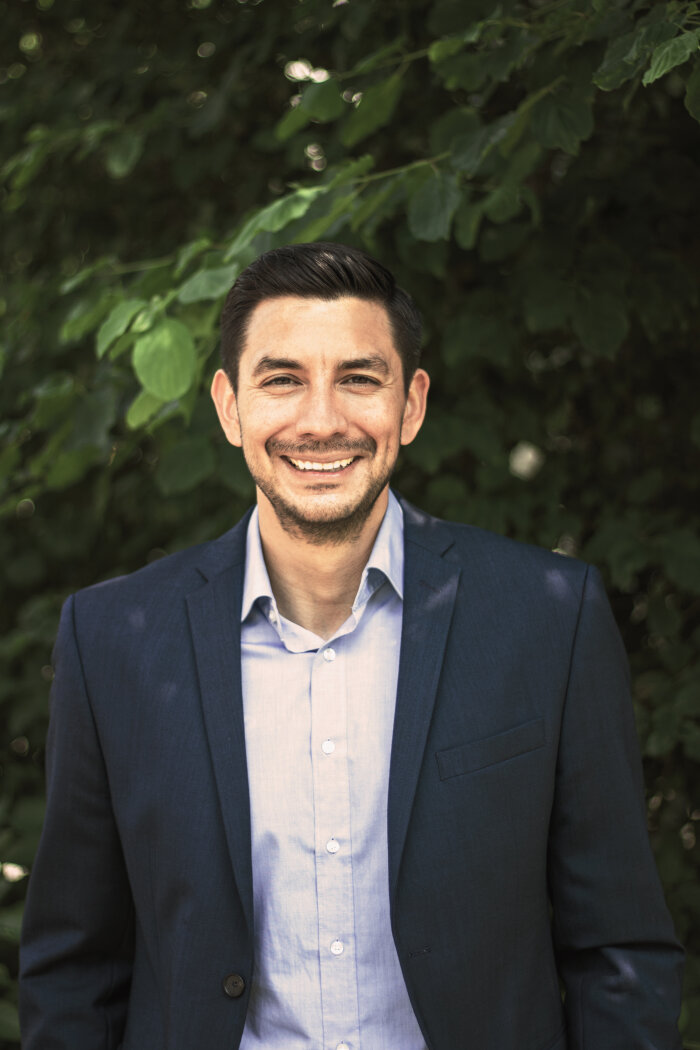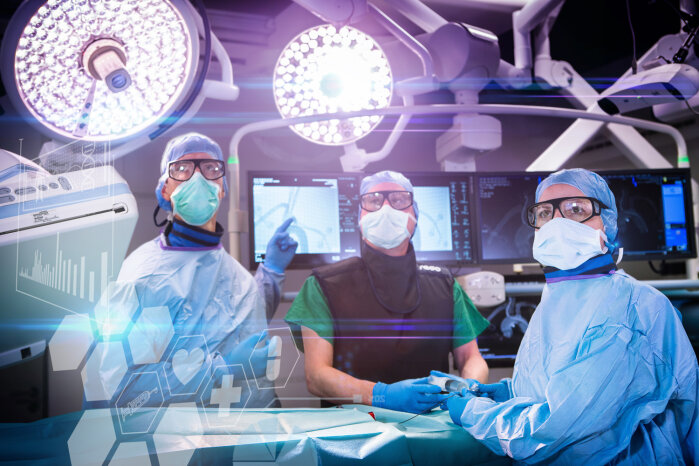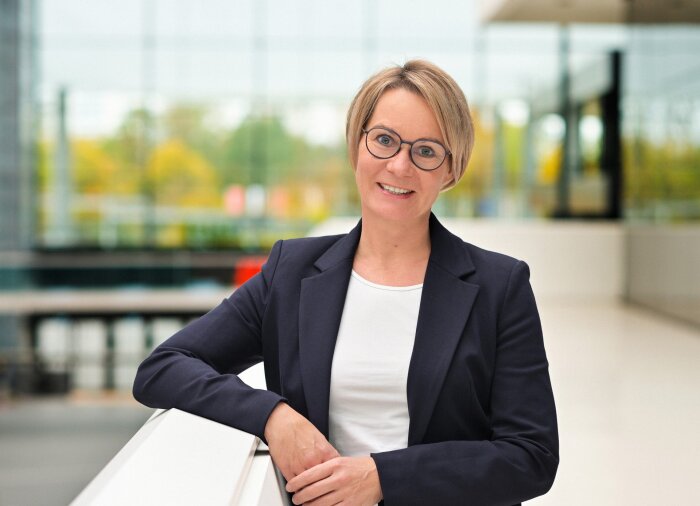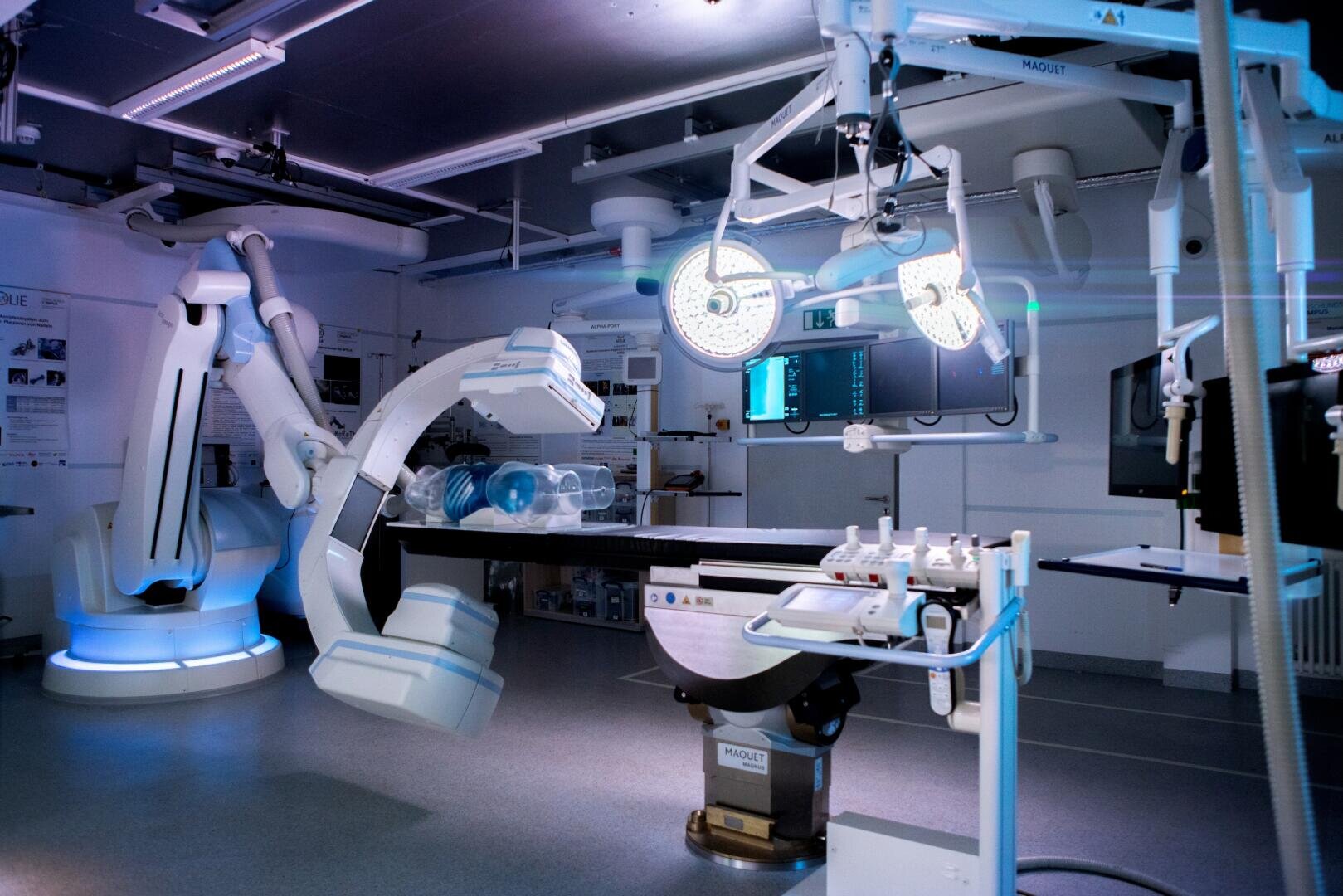5G in the operating theatre: Data highways and AI pave the way for telesurgery
While 4G established a solid foundation for mobile communication, 5G — with its extremely low latency — opens up entirely new possibilities. Applications such as the remote control of surgical robots over long distances are now within reach. What once seemed a vision is becoming a real option.
A surgeon sits at a console in Mannheim, while the patient lies on an operating table more than 100 kilometres away in Strasbourg. The doctor issues commands, and a robot in the connected operating theatre executes them with millimetre precision. Technically, this is already possible today. In the project 5G-OR – short for “Establishing the next generation of a 5G-enabled operating room ecosystem to improve patient outcome” – German and French partners from research institutes and hospitals have, for the first time, demonstrated that cross-border surgical procedures can be carried out. “We set up a private 5G campus network to support clinical workflows in real time,” explains Johannes Horsch from the Fraunhofer Institute for Manufacturing Engineering and Automation (IPA). “Our goal was to prove that telesurgery can be integrated into everyday clinical practice.”
High-performance data highway
These are still pilot trials — carried out on models and in specially equipped hybrid operating theatres — yet they show how close the future has already come. 5G creates a high-performance data highway that enables the exchange of vast amounts of information almost without delay. As part of the now completed project, operating theatres at the Fraunhofer Institute for Manufacturing Engineering and Automation IPA in Mannheim, the Institut Hospitalo-Universitaire Strasbourg (IHU) and Charité Berlin were equipped with local 5G campus networks and connected via fibre-optic and copper cables. The aim was to test, under realistic conditions, how digital technologies can improve patient care. The goals: fewer complications, smoother workflows, and relief for medical staff. Horsch, Head of Medical Assistance Systems at Fraunhofer IPA, emphasises: “It’s about optimising workflows, reducing the workload for doctors and nurses, and ultimately making treatment safer.”
5G – The data highway for surgery
5G is the fifth generation of mobile communication technology and the successor to 4G/LTE. While 4G achieves latency times of around 30–50 milliseconds, 5G reduces this to just 1–10 milliseconds – a crucial factor in telesurgery, where fractions of a second determine precision. In addition, 5G enables data transfer rates of up to 10 gigabits per second and can connect up to one million devices per square kilometre. The next generation, 6G, is still in development and is expected to deliver even higher data rates and real-time performance from around 2030 onwards. |
The vision is as simple as it is far-reaching: where specialised surgeons today are often only available after a long journey, in the future a procedure could begin immediately. Emergencies such as strokes or heart attacks could be treated more quickly, as experts would be able to join remotely. At the same time, telesurgery offers the potential to close gaps in medical care in rural areas where qualified specialists are in short supply.
The international momentum is already tangible. In the United States and China, the first telesurgical operations on patients have already been performed, while Europe is striving to keep pace through projects such as 5G-OR. “There’s a lot happening globally in this field, and we mustn’t fall behind,” warns Horsch. “If we want Europe to remain at the forefront, we need to continue developing this technology with determination.”
Network setup – costly and complex
The 5G-OR project has developed impressive use cases for this purpose. In addition to telesurgery, the focus was on AI-assisted analysis — for instance, the real-time evaluation of endoscopy video data or support for anaesthesia through the automated monitoring of vital parameters. Mobile robots were also introduced to handle logistical tasks in the operating theatre, such as transporting instruments and materials. All these applications show that the goal is not merely the spectacular remote control of a patient, but rather the creation of an entire ecosystem designed to make surgical procedures safer and more efficient.

Johannes Horsch, Head of Medical Assistance Systems at Fraunhofer IPA. Foto © Fraunhofer IPA
Edge computing in the operating theatreIn the 5G-OR project, edge computing was used to analyse imaging and vital data directly within the operating theatre. This significantly shortens data pathways, reduces latency, and enables systems to respond more quickly. Edge computing means that data are not processed in distant data centres but directly where they are generated – at the edge of the 5G network. This is particularly crucial for telesurgery, as it allows the surgeon to receive feedback almost in real time. |
The foundations have been laid, but the path to widespread clinical implementation remains complex. In hospitals, the reality differs from the research environment. Setting up private 5G campus networks is technically feasible, yet costly and organisationally demanding. Applications to the Federal Network Agency, coordination with landlords and property owners, and integration into existing IT infrastructures — all of this requires time and money. “A private 5G network isn’t just another hotspot you can simply place anywhere,” explains Horsch. “It’s a complete infrastructure that must be managed, secured, and integrated into clinical workflows. This represents a major intervention in a hospital’s IT architecture.” Another challenge is that only a small number of medical devices are currently equipped with 5G interfaces, further delaying broader adoption.
Unresolved questions
In addition to technical challenges, economic and legal issues also stand in the way of rapid adoption. Who bears responsibility if a remote procedure goes wrong? How is a surgeon remunerated when operating in another country? And which law applies if the patient and surgeon are located in different states? These questions remain unresolved, as does the issue of liability between advisory telepresence and direct surgical intervention. “Legally, this has not yet been clearly defined,” says Horsch. “The question of responsibility remains open, as does the issue of remuneration. Yet there is enormous potential – from improving care in underserved regions to reducing travel costs and the CO₂ footprint.”
Acceptance also plays a crucial role. While younger doctors are generally more open to technology and view digital solutions as a given, many experienced physicians remain sceptical. Often, the issue is the relationship of trust between doctor and patient. Surgery is a highly personal procedure that requires intimacy and a sense of closeness. Patients want to know their doctor before placing their trust in them – whether in person or mediated through a machine. Horsch sees this as a decisive factor: “Every patient chooses their doctor because they want to feel in good hands. That relationship of trust must also be established over distance; otherwise, telesurgery will never gain broad acceptance.”
Sensitive sense of touch
Technological progress is advancing rapidly. The remaining challenges are now being addressed – for example, the lack of satisfactory haptic feedback for the remote surgeon. At present, the resistance a needle encounters when piercing tissue is transmitted with a slight delay, meaning the sensation is not yet realistic enough to achieve perfect transparency. “In 5G-OR, we achieved latencies of around 40 milliseconds between the operating rooms. That is absolutely sufficient for image and data transmission,” says Horsch. “However, in the area of haptics, this delay remains a problem. The visual cortex is tolerant of small delays, but the sense of touch is more sensitive – it immediately detects when something is out of sync.”
This is precisely where the follow-up project DAIOR comes in, with Fraunhofer IPA again taking a leading role. The solution, unsurprisingly, may lie in the use of artificial intelligence. AI is intended to compensate for the latency that still exists even with 5G. Algorithms learn how tissue is likely to behave and simulate for the surgeon the sensation they would feel without delay. “AI is not a universal remedy, but in telesurgery it’s a real game changer,” says Horsch. “With predictive algorithms, we can mitigate physical limitations and make the system more robust. This allows the surgeon to receive realistic feedback even when the connection isn’t perfect. We are not talking about large language models here, but about classical machine learning methods specifically trained on medical data.”

In the DAIOR research project, Fraunhofer IPA is working to realise the operating theatre of the future using AI and robot-assisted telesurgery. Foto © Fraunhofer IPA
DAIOR, short for “Distributed Artificial Intelligence for the Operating Room,” goes beyond improving haptics to take a more comprehensive view of telesurgery. The project applies the principle of federated learning: patient data remain within each hospital, while only the trained models are exchanged. This creates a distributed pool of knowledge without sensitive information ever leaving its source. By learning from the experience of many operations, the algorithms can optimise procedures and workflows. The result is more realistic simulations, faster processes, and surgical interventions independent of location. “This is a milestone for healthcare, particularly in emergency medicine where every second counts,” says Horsch. “Patients benefit because staff have more time for treatment while technology takes over routine tasks.”
The human being remains at the centre
For telesurgery to move from experimental trials into real operating theatres, more than technology is needed. Financial incentives, sustainable business models, and the willingness to explore new approaches are essential. The Hospital Future Act has created initial funding opportunities, but telesurgery is not yet embedded in the reimbursement system. Horsch believes the responsibility lies with policymakers: “It should receive public funding and be recognised by insurers as part of standard care. Only if the framework conditions are right will telesurgery become established in Germany.”
Telesurgery will not revolutionise hospital practice overnight, but it is more than just a research project. With every trial, knowledge grows; with every test, the technology becomes more refined. The operating theatre of the future will be more connected, with robot-assisted systems supporting surgeons, and AI analysing data and informing decisions. Yet one thing will not change: the human being remains at the centre. “We are developing assistance systems, not replacement systems,” says Horsch. “The technology is meant to make medical staff more productive, safer, and faster – but not to replace them.”
The operating theatre of the future
Will surgeons one day operate from home? Horsch’s answer is clear. “I don’t think doctors will be working from home in the future,” he says. “Direct contact with patients is essential, and physicians want to know their patients personally. But if a complex case arises where specialist expertise is urgently needed, it’s a wonderful opportunity to bring in an expert remotely.”
Telesurgery stands at a turning point: the technical feasibility studies have been successful, initial solutions are available, and international progress is clearly visible. At the same time, questions remain that must be addressed by policymakers, hospitals, and industry alike. The direction, however, is clear. Telesurgery will expand the scope of modern medicine – and it offers the opportunity to raise patient care to a new level.
5G and the future of digital, connected healthcare – at MedtecLIVE
At MedtecLIVE 2026, it becomes clear how profoundly digital transformation is reshaping the demands placed on medical technology suppliers. 5G, AI and connected operating systems are no longer visions of the future but concrete fields of innovation that require new technical standards and interfaces. For suppliers, this means that those investing today in intelligent sensor technology, real-time communication and system integration are positioning themselves as strategic partners for the connected healthcare of tomorrow.
“5G is the infrastructure on which the next generation of medical technology systems will be built – and suppliers are the architects of this development,” explains Silke Ludwig, Deputy Director of MedtecLIVE. “The requirements for components, data processing and connectivity are increasing rapidly. At MedtecLIVE 2026, we will show how supplier companies are actively shaping this future: as drivers of innovation, as technology partners, and as bridge-builders between hospitals and industry. Those who are present here are not only shaping products, but the digital medicine of tomorrow.”

Silke Ludwig, Deputy Director MedtecLIVE. Foto © NürnbergMesse


